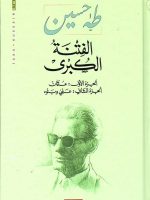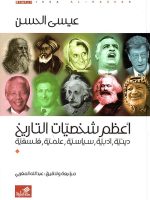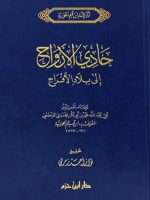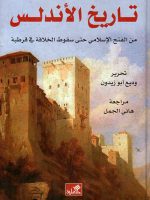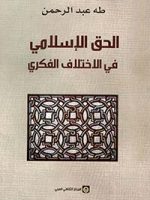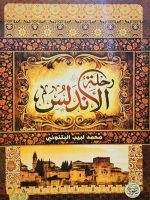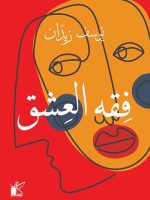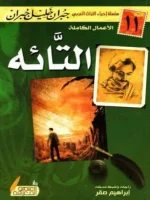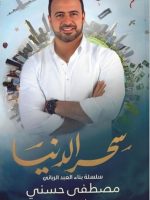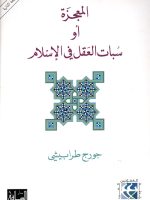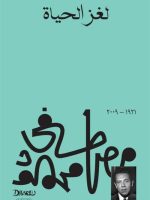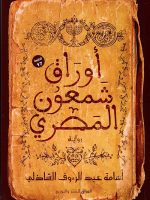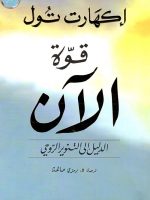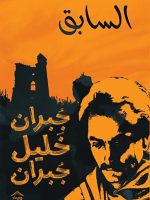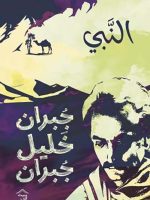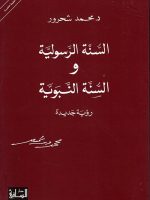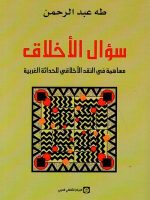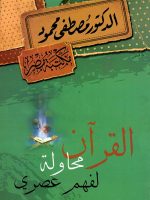-
The Great Tribulation
د.ا13.00A thorough historical and intellectual analysis of the events of the political and religious conflict in early Islam, shedding light on pivotal figures such as Ali and Mu’awiyah.
-
The Greatest Figures in History Religious Literary Political Scientific and Philosophical
د.ا10.50The book reviews the biographies of the greatest figures who have influenced the fields of religion, literature, politics, science, and philosophy throughout history.
د.ا11.00 -
The guide of souls to the land of joy
د.ا4.26A book in which Ibn Qayyim al-Jawziyya discusses the spiritual journey and the ways to reach eternal happiness in the afterlife.
د.ا4.97 -
The History of Andalusia from the Islamic Conquest until the Fall of the Caliphate in Cordoba
د.ا8.00The book traces the history of Andalusia from the Islamic conquest until the fall of the Caliphate in Cordoba, highlighting the most prominent political and cultural events of that period.
د.ا8.50 -
The Islamic Right to Intellectual Difference
د.ا7.10Dr. Taha Abdul Rahman opens this book with a question: Does the Muslim nation have its own answer to the questions of its time? He believes that every time has its own questions, and it is the duty of every nation to answer these questions, and it is not a true nation until it raises the answer to the rank of independence in it.
د.ا8.52 -
The Journey to Andalusia
د.ا6.00The book describes the author’s observations during his trip to Andalusia, documenting its Islamic monuments and cultural history.
د.ا6.50 -
The Jurisprudence of Love
د.ا5.00A philosophical and mystical contemplation of the essence of love as a spiritual state that transcends love and delves into the essence of human existence.
-
The lost
د.ا2.13Gibran’s literary style was characterized by smooth words, simplicity of expression, the use of all linguistic formulas and styles, and the frequent use of metaphors and figures of speech. Perhaps the most important feature of Gibran’s literary works is creativity in the art of photography. We find many beautiful, imaginative artistic images full of deep meanings and expressions covering his literary works; because he was an artist and painter who initially depicted the idea and then created it. Gibran relied on two styles in his literary works: the first is characterized by strength and revolution against beliefs and customs and the call for freedom, and the second is characterized by the love of enjoying life and the call to follow inclinations
د.ا3.55 -
The Lost Symbol
د.ا10.00A suspenseful mystery novel that follows symbologist Robert Langdon on an adventure to uncover lost historical secrets linked to Freemasonry.
د.ا11.00 -
The Magic of the World
د.ا3.55A book that discusses how to achieve a balance between the pleasures of the world and spirituality according to an Islamic perspective.
د.ا4.26 -
The Miracle or the Sleep of Reason in Islam
د.ا6.50This book discusses the impact of belief in miracles on the paralysis of critical reason in Islamic culture.
د.ا7.00 -
The Muslim Teacher Characteristics and Duties
د.ا7.00This book addresses the role of the Muslim teacher by highlighting their essential qualities and duties in education according to Islamic principles.
-
The mystery of life
د.ا2.13The mystery of life… The more information is available about the progress of science and its tools, the more the human mind is puzzled by this miracle. About this mystery, Dr. (Mustafa Mahmoud) wrote this book, so he started with the form of life millions of years ago, which was free of weakness and aging and did not depend on mating and cross-fertilization. Then he moved on to the development of life after the forbidden tree and its journey with annihilation. The topics of the book also vary to include Darwin’s theory, Freud’s theories, the atomic bomb, the languages of animals and insects, and other mysteries of science and life that the author presents in a distinctive style and special content that carries a new view of the world around us.
د.ا4.26 -
The Papers of Simon the Egyptian
د.ا14.00A historical novel that deals with the journey of an Egyptian Jewish doctor during the time of the Pharaohs, revealing the struggles of identity, religion, and politics.
د.ا14.50 -
The Power of Now; The Guide to Spiritual Enlightenment
د.ا4.97The Power of Now emphasizes the importance of living in the present moment to achieve inner peace
د.ا6.39 -
the previous
د.ا2.13Gibran’s literary style was characterized by smooth words, simplicity of expression, the use of all linguistic formulas and styles, and the frequent use of metaphors and figures of speech. Perhaps the most important feature of Gibran’s literary works is creativity in the art of photography. We find many beautiful, imaginative artistic images full of deep meanings and expressions covering his literary works; because he was an artist and painter who initially depicted the idea and then created it. Gibran relied on two styles in his literary works: the first is characterized by strength and revolution against beliefs and customs and the call for freedom, and the second is characterized by the love of enjoying life and the call to follow inclinations
د.ا3.55 -
The Prophet
د.ا3.05Gibran’s literary style was characterized by smooth words, simplicity of expression, the use of all linguistic formulas and styles, and the frequent use of metaphors and figures of speech. Perhaps the most important feature of Gibran’s literary works is creativity in the art of photography. We find many beautiful, imaginative artistic images full of deep meanings and expressions covering his literary works; because he was an artist and painter who initially depicted the idea and then created it. Gibran relied on two styles in his literary works: the first is characterized by strength and revolution against beliefs and customs and the call for freedom, and the second is characterized by the love of enjoying life and the call to follow inclinations
د.ا4.26 -
The Prophetic Sunnah and the Prophetic Sunnah
د.ا6.50The book addresses the reinterpretation and analysis of the Prophetic and Apostolic Sunnah from a contemporary perspective, with a focus on renewing the Islamic understanding of the rulings.
د.ا7.00 -
The Question of Ethics
د.ا5.68“…If they had returned to themselves, they would have found that they permit for themselves what they forbid for others. If it is permissible for them to criticize the religious through what is non-religious, why is it not permissible for others to criticize the non-religious through what is religious! And if it is permissible for them to criticize Islamic ethics through secular modernity, why is it not permissible for others to criticize secular modernity through Islamic ethics? It is necessary, then, to seek ethics that move away from the surface at which modernity has stopped and delve into the depths of life and the depths of man. There is nothing deeper than a life that extends from its immediate to its ultimate end, and nothing deeper than a man who connects his outer appearance with his inner self” (From the book The Question of Ethics)»
د.ا7.10 -
